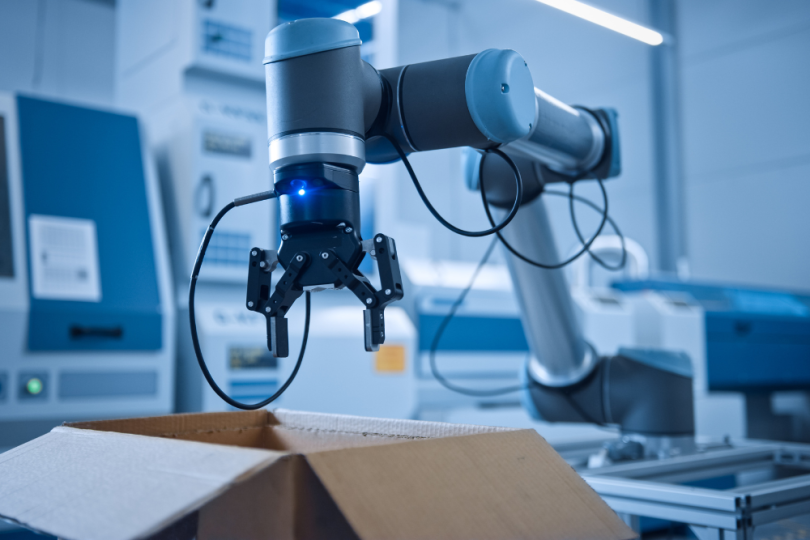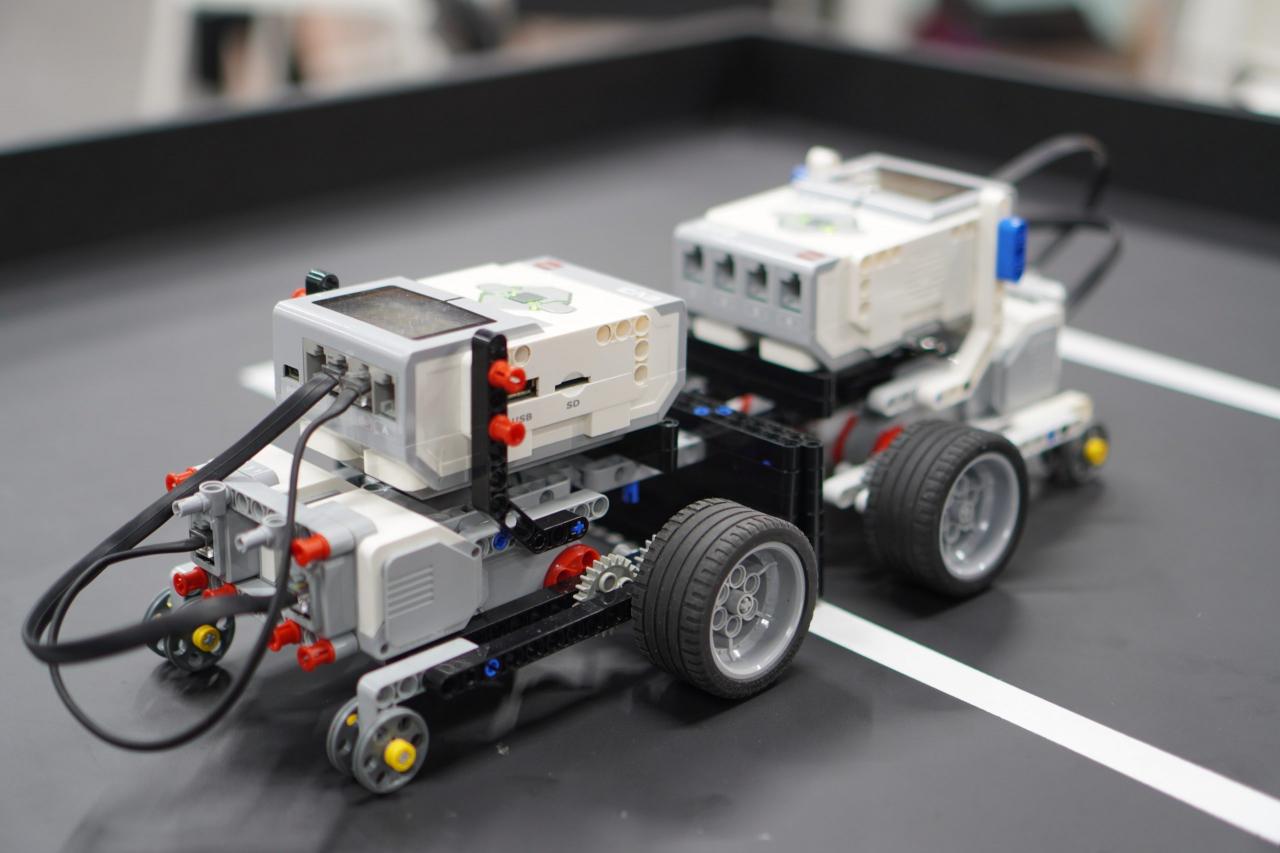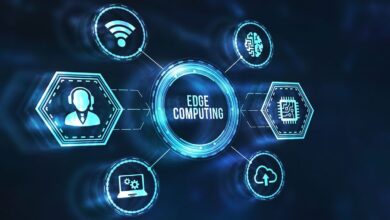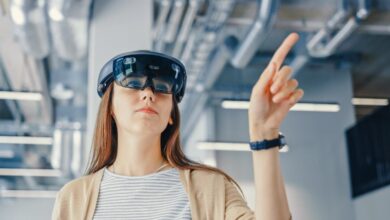The Dawn of Everyday Robotics Ease Complex Tasks

The field of robotics is no longer confined to the futuristic visions of science fiction or the monotonous assembly lines of manufacturing plants. We are witnessing a fundamental shift, a new era where robots are becoming more intelligent, versatile, and integrated into our daily lives. This transformation is driven by a convergence of artificial intelligence, advanced sensors, and sophisticated materials, enabling robots to perform complex tasks, interact with their environment, and collaborate with humans in ways we could only imagine a decade ago. This article will explore the key pillars of this revolution, from the rise of collaborative robots to the ethical and societal challenges that accompany this incredible progress. We will delve into the cutting-edge applications of robotics, the technologies powering this new age, and the profound impact they will have on our world.
The Evolution of Robotics

For much of its history, robotics was defined by large, caged machines designed to perform repetitive tasks with precision but little flexibility. These “industrial robots” were powerful but lacked the ability to adapt to changing environments or interact safely with humans. The new era is characterized by a departure from this rigid model toward a more adaptable, intelligent, and human-centric approach.
A. Collaborative Robots (Cobots)
The most significant change in recent years has been the development of collaborative robots, or cobots. Unlike their predecessors, cobots are designed to work safely alongside human colleagues without the need for fences or cages. They are equipped with advanced sensors that allow them to detect and react to human presence, preventing collisions and enabling seamless cooperation.
- Shared Workspace: Cobots can work in the same physical space as humans, assisting with tasks like lifting heavy objects, sorting components, or performing intricate assembly work.
- Ease of Programming: Many cobots are designed to be easily programmed through “teaching by demonstration,” where a human can physically guide the robot’s arm to perform a task, and the robot learns the motion.
- Increased Efficiency: By handling repetitive and physically demanding tasks, cobots free up human workers to focus on more complex, creative, and value-adding activities.
This collaborative model is not about replacing human workers but about augmenting their capabilities, making them more productive and their work safer.
B. The Rise of Soft Robotics
The traditional, rigid design of robots limits their ability to interact with delicate objects or navigate complex, unstructured environments. Soft robotics is a new field that challenges this, creating robots from flexible, compliant, and often deformable materials.
- Mimicking Biology: These robots are inspired by biological systems, such as the movements of an octopus’s arm or the grip of an elephant’s trunk.
- Safer Interaction: Their soft bodies make them inherently safer for interaction with humans and delicate objects, as they can deform to absorb impact.
- New Applications: Soft robots are being developed for applications in fields like healthcare (e.g., surgical tools that can navigate complex anatomy) and search and rescue (e.g., robots that can squeeze through tight spaces).
Key Technologies Fueling the Revolution
The incredible progress in robotics is not a singular event but a result of a synergy between multiple technological advancements.
A. Artificial Intelligence and Machine Learning
AI is the brain of the new generation of robots. Machine learning enables robots to learn from data and improve their performance over time.
- Computer Vision: AI-powered computer vision allows robots to “see” and interpret their surroundings. They can recognize objects, track movements, and navigate environments with increasing accuracy. This is crucial for tasks like picking items from a jumbled bin in a warehouse.
- Reinforcement Learning: Robots can learn through trial and error, a process that is particularly effective for complex tasks like grasping or walking. The robot is given a goal and a reward system, and it learns the optimal way to achieve the goal through repeated attempts.
- Natural Language Processing (NLP): As robots become more integrated into our lives, the ability to interact with them naturally becomes essential. NLP allows robots to understand and respond to human commands, making interaction seamless.
B. Advanced Sensors and Actuators
Robots are only as good as their senses. The new era is defined by a proliferation of highly sensitive and precise sensors.
- Haptic Sensors: These sensors give robots a sense of touch, allowing them to gauge pressure and texture. This is vital for handling delicate objects and performing surgical procedures.
- High-Resolution Cameras and LiDAR: These provide robots with a detailed perception of their environment, enabling safe and efficient navigation.
- More Efficient Actuators: Actuators are the components that create motion. New, more compact, and energy-efficient actuators are making it possible to build smaller, more agile robots.
C. The Cloud and the Internet of Things (IoT)
The cloud provides the necessary computational power and data storage for complex AI models. IoT connects robots to a network of devices and systems, allowing them to share information and coordinate tasks.
- Shared Learning: A fleet of robots can share data and learn from each other’s experiences, accelerating the learning process exponentially.
- Remote Management: Robots can be monitored and controlled from anywhere in the world, allowing for remote maintenance and troubleshooting.
Applications Across Industries

The new era of robotics is set to revolutionize a wide range of sectors beyond traditional manufacturing.
A. Healthcare and Medicine
Robotics is transforming healthcare, from assisting surgeons to providing companionship for the elderly.
- Surgical Robots: Robots can perform delicate, high-precision surgical procedures with greater accuracy and less invasiveness than a human surgeon.
- Exoskeletons and Prosthetics: Powered exoskeletons are helping people with mobility issues walk again, while advanced robotic prosthetics are offering a new level of dexterity and control.
- Patient Care: Robots are being developed to assist with patient monitoring, medication delivery, and even providing emotional support to isolated individuals.
B. Logistics and Warehousing
The e-commerce boom has created an enormous demand for automated logistics. Robots are playing a key role in making warehouses more efficient.
- Automated Guided Vehicles (AGVs): These robots transport goods around warehouses, optimizing the flow of products.
- Automated Picking and Packing: Robots equipped with advanced computer vision and grasping capabilities can identify and pick individual items from shelves, a task that was once highly dependent on human labor.
- Last-Mile Delivery: Drones and small ground-based robots are being tested for last-mile delivery, especially in urban environments.
C. Agriculture
Robotics is helping to address the challenges of food security and sustainable farming.
- Automated Planting and Harvesting: Robots can precisely plant seeds, monitor crop health, and harvest produce, reducing waste and increasing yields.
- Precision Agriculture: Drones and ground-based robots can analyze soil conditions and plant health, allowing farmers to apply water and fertilizers only where they are needed, reducing environmental impact.
- Weed Control: Robots equipped with computer vision can identify and remove weeds, eliminating the need for harmful herbicides.
Ethical and Societal Challenges
The rise of robotics presents profound ethical and societal questions that we must address proactively.
A. Job Displacement and Reskilling
The automation of tasks previously performed by humans will undoubtedly lead to job displacement in some sectors. This is a critical challenge that requires:
- Investment in Education and Reskilling: Governments and businesses must provide training programs to equip workers with the skills needed for the jobs of the future, such as robotics maintenance, data analysis, and AI development.
- Foster a “Human-in-the-Loop” Approach: The goal should not be to replace humans but to empower them with robotic tools, allowing them to focus on tasks that require creativity, empathy, and strategic thinking.
- Establish New Economic Models: We may need to explore new economic models, such as universal basic income, to ensure that everyone can benefit from the increased productivity that robotics will bring.
B. Safety and Accountability
As robots become more autonomous, the question of who is responsible when something goes wrong becomes a major legal and ethical issue.
- Establishing Clear Regulations: Governments need to create clear and consistent regulations for the development and deployment of robots, particularly in public spaces.
- Ethical Design Principles: The robotics community must adhere to a set of ethical design principles that prioritize human safety, fairness, and transparency.
- The “Black Box” Problem: The decision-making process of an AI-powered robot can be a “black box,” making it difficult to understand why a specific action was taken. This needs to be addressed through transparent and auditable AI systems.
C. Algorithmic Bias
Like any AI-powered system, robots can inherit and perpetuate biases from the data they are trained on. This could lead to discriminatory outcomes in areas like healthcare or law enforcement. It is crucial to:
- Audit Training Data for Bias: Datasets used to train robots must be carefully vetted for any biases that could lead to unfair outcomes.
- Promote Diversity in Development: A diverse group of developers and researchers is more likely to identify and mitigate potential biases in robotic systems.
- Create Human Oversight: Even in highly autonomous systems, there should always be a human in the loop to provide oversight and intervene when necessary.
Conclusion
The new era of robotics is not a distant possibility; it is a present-day reality that is rapidly reshaping our world. We are moving beyond the traditional image of rigid, caged industrial machines and entering a period of sophisticated, collaborative, and intelligent systems. The emergence of collaborative robots, or cobots, marks a pivotal shift, as they are designed to work safely alongside humans, augmenting our capabilities rather than simply replacing them. The field of soft robotics, inspired by the flexibility of living organisms, promises a new generation of robots that can interact with the world in a more delicate and adaptable manner, opening up groundbreaking applications in healthcare and beyond.
This incredible progress is powered by a confluence of technological breakthroughs. Artificial intelligence and machine learning serve as the brain of these new robots, enabling them to see, learn, and make decisions with increasing autonomy. Advanced sensors and actuators provide a sense of touch and precise movement, while the cloud and IoT allow for shared learning and global coordination. These technological advancements are not merely theoretical; they are already transforming industries. In healthcare, robotic systems are performing life-saving surgeries with incredible precision. In logistics, they are automating the complexities of warehousing to meet the demands of e-commerce. In agriculture, they are helping farmers increase yields while reducing their environmental footprint.
However, as we embrace this new era, we must also confront the profound ethical and societal challenges that accompany it. The potential for job displacement requires a proactive commitment to education and reskilling, ensuring that the human workforce is prepared for the new economy. The issues of safety, accountability, and algorithmic bias demand careful consideration and the establishment of clear ethical guidelines and regulations. The future of robotics is not just about building better machines; it is about building a better society, one where robots are a tool for human empowerment, safety, and progress. It is a journey that requires collaboration between innovators, policymakers, and the public to ensure that this incredible technology serves the greater good and creates a future that is more prosperous and equitable for all.












